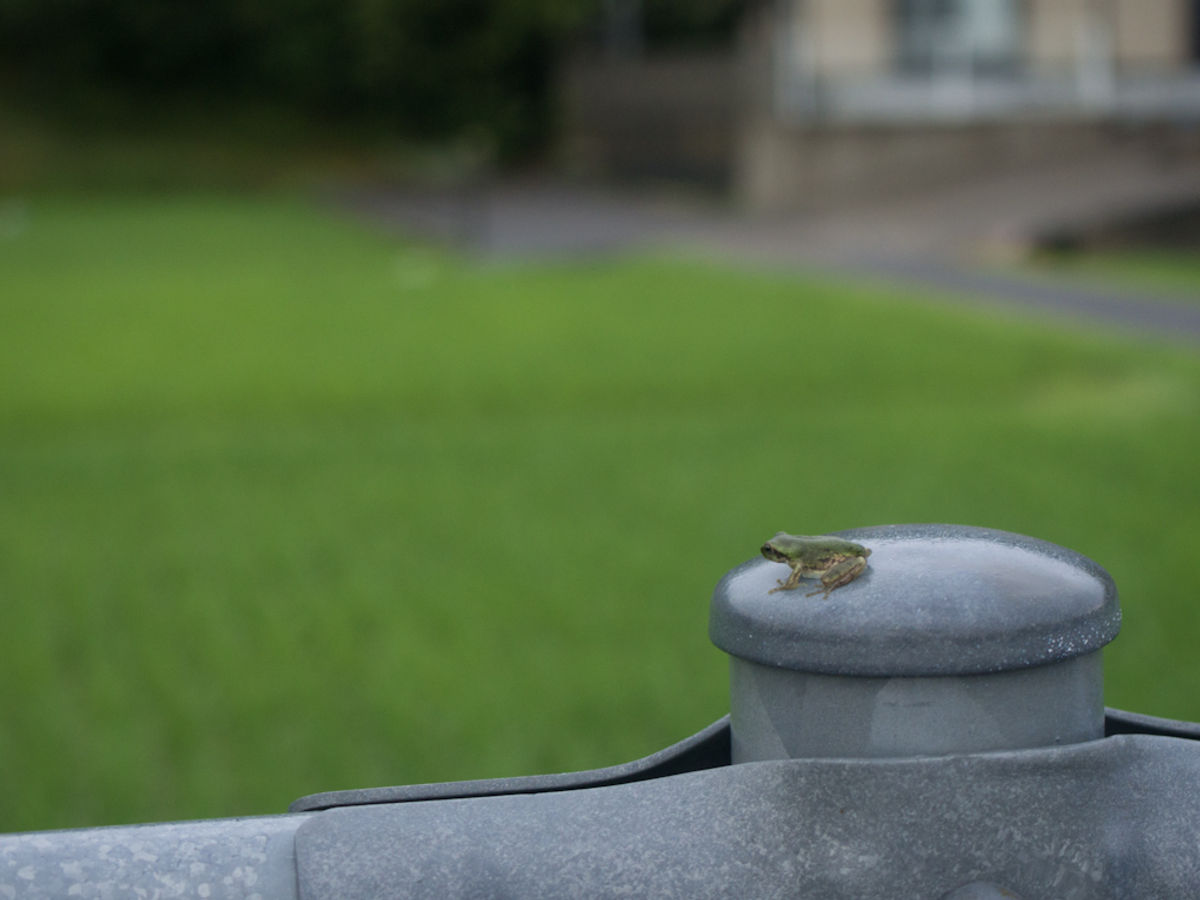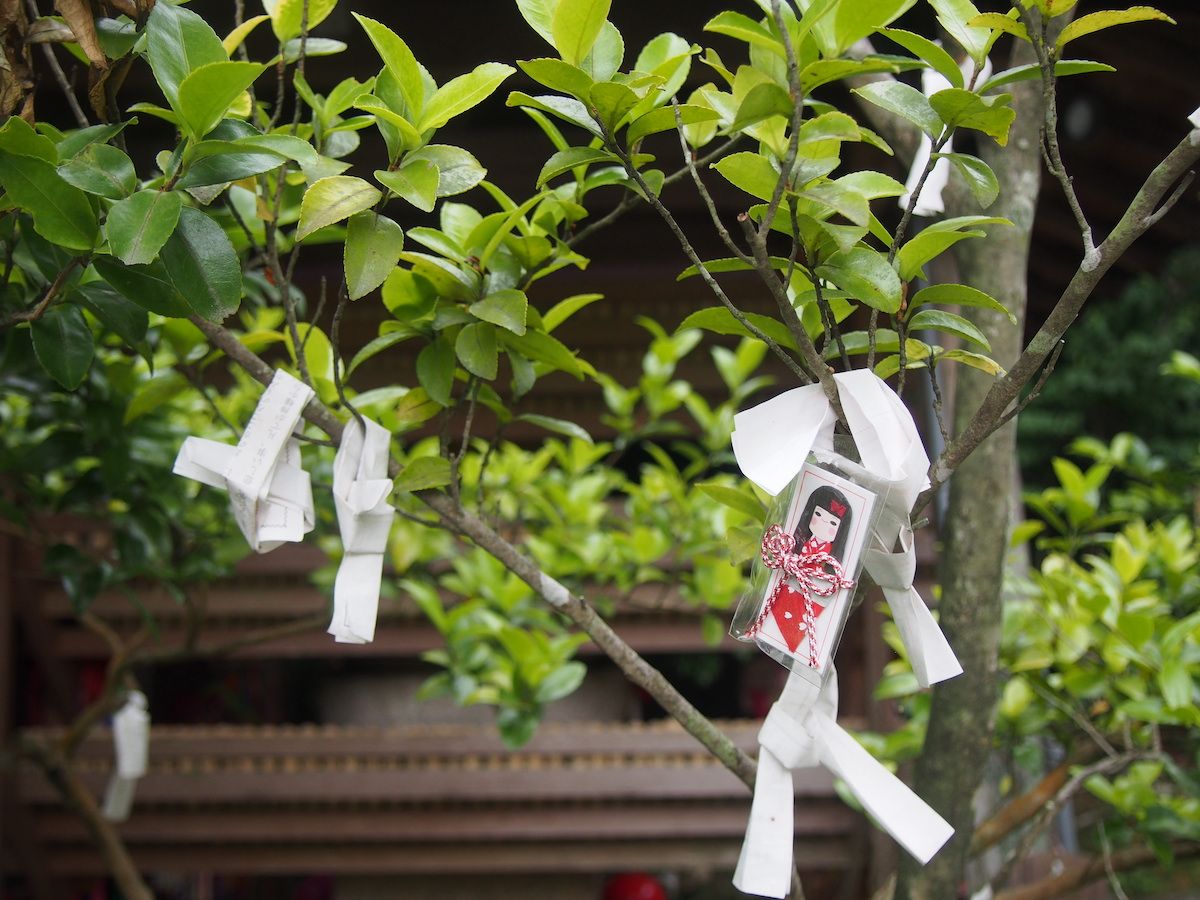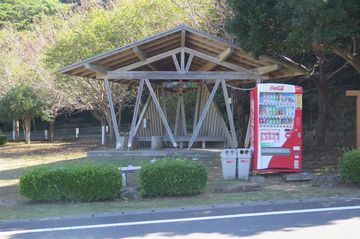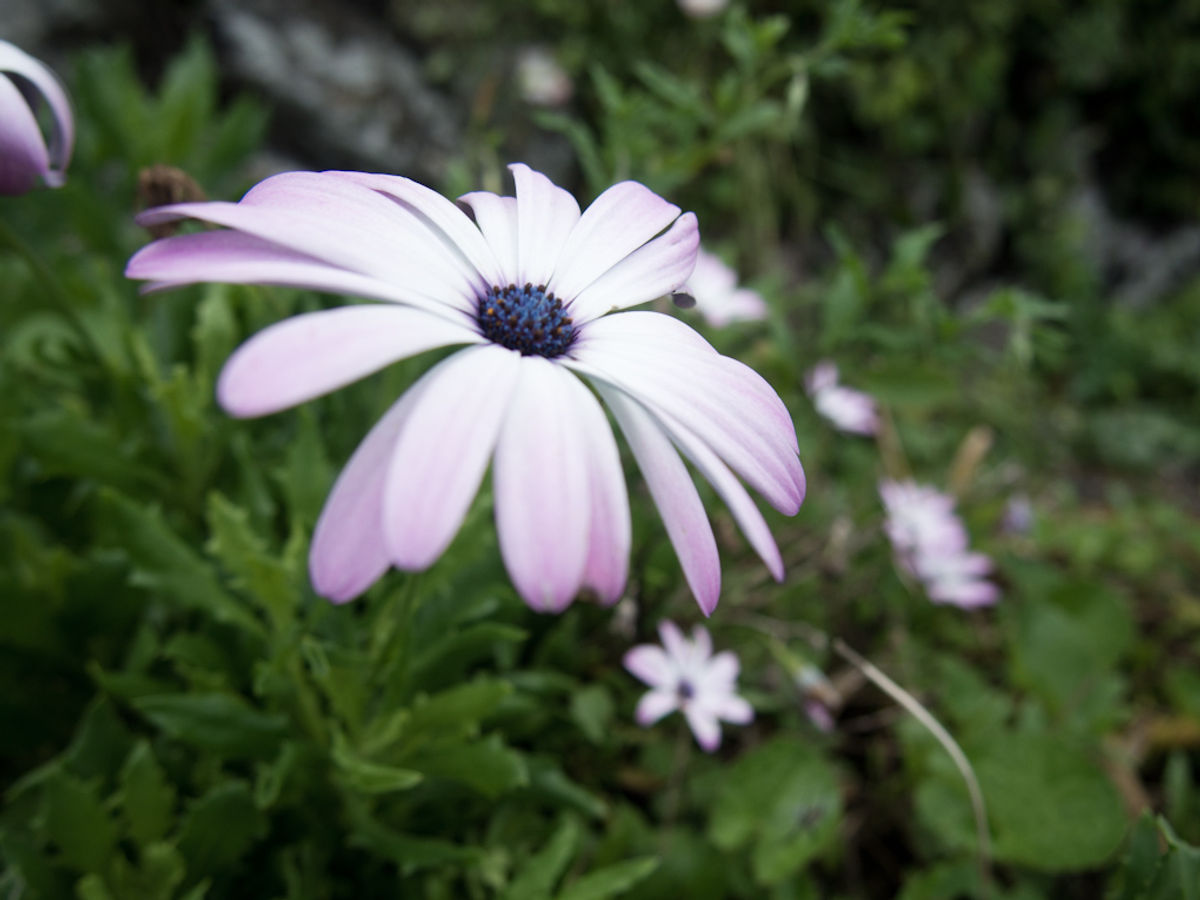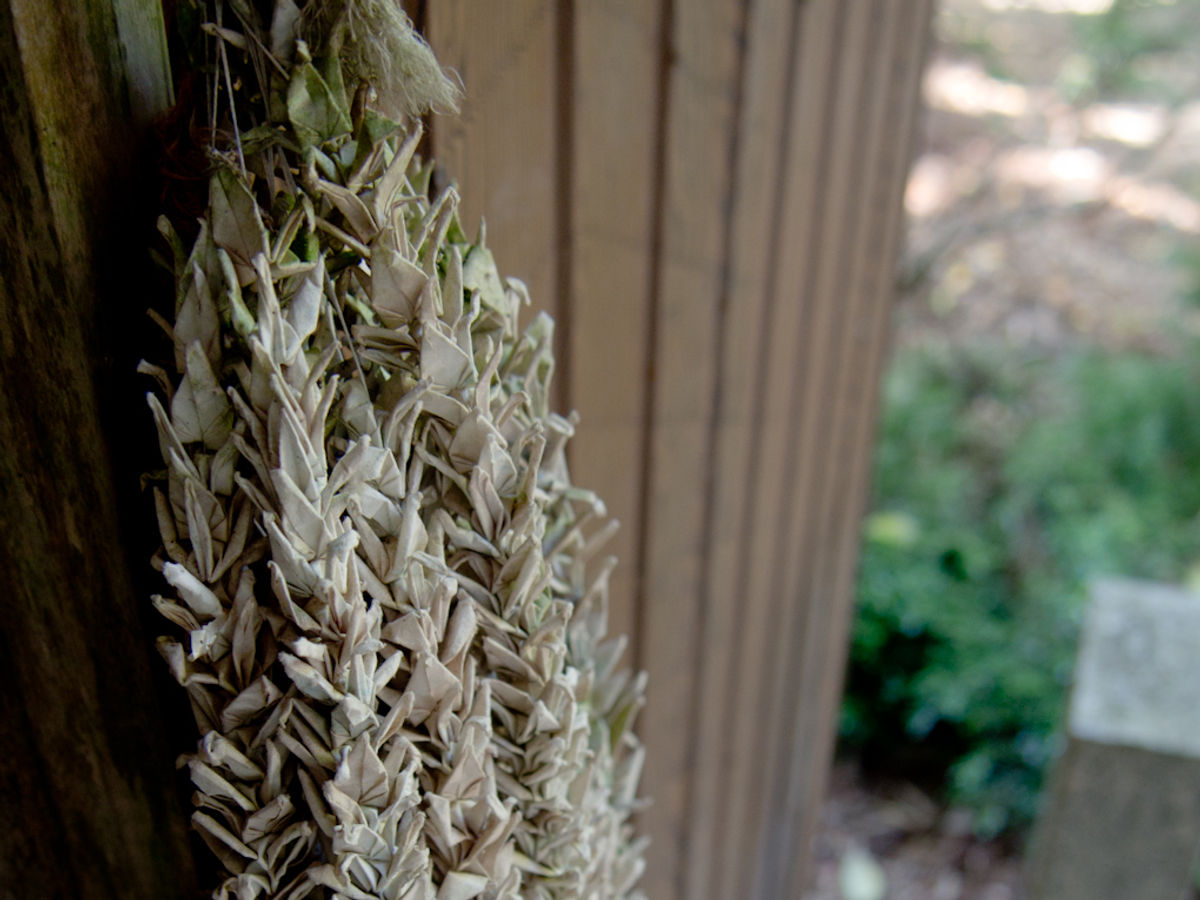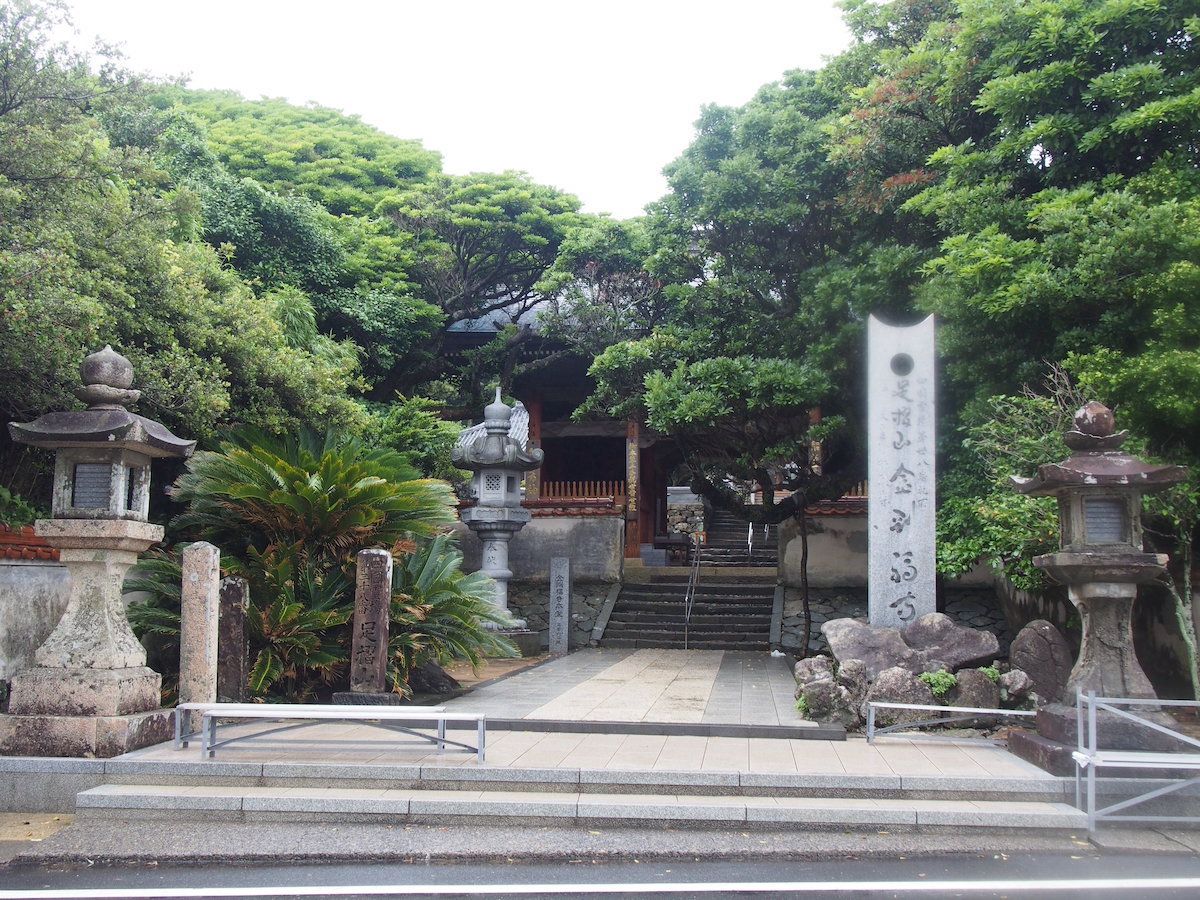
Kongofukuji (金剛福寺) is the 38th temple of the Shikoku Pilgrimage in Kochi Prefecture, Shikoku, Japan. It is situated at the tip of the Ashizuri Peninsula, overlooking the Pacific Ocean. Historically, the temple has received aristocrats, warriors, and noble clans such as the Minamoto, Chosokabe, and Yamanouchi clans.
If you look at the outline of the island of Shikoku, the peninsula sticks out in the far southwest corner of the map. The cape is the southernmost point of Shikoku. Kongofukuji is 85 kilometers (53 miles) south of Iwamotoji (岩本寺), making this the longest stretch between two temples of the entire pilgrimage. On foot, it takes an average of 30 hours to travel between the temples.
Kongofukuji consists of several building structures, each with its own unique architecture. They have a rustic, smoky wooden exterior that might remind some of dark driftwood on beaches. The smell of the ocean lingers and mixes with the smell of incense left by monks and worshippers. At the center of these buildings is a great pond surrounded by carefully selected, large colorful stones. The colors of the stone and the buildings reflected in the pond produce quite a serene view. The main buildings of the temple rest against a lush hill filled with windswept pine trees.
In the 7th century, folklore has it that a well-known ascetic named En no Gyoja traveled to Ashizuri Cape, and exorcized a long-nosed tengu spirit. Then in 822, Emperor Saga gave orders to the Buddhist monk Kukai (空海), whom the pilgrimage is based on, to build a temple at the cape. Kukai decided to have the Sahasra-bhuja, the three-faced and thousand-handed Senju Kannon Bosatsu, as the deity of worship at the temple.
Hours
OpenAmenities & Facilities
Key Distances & Elevations

